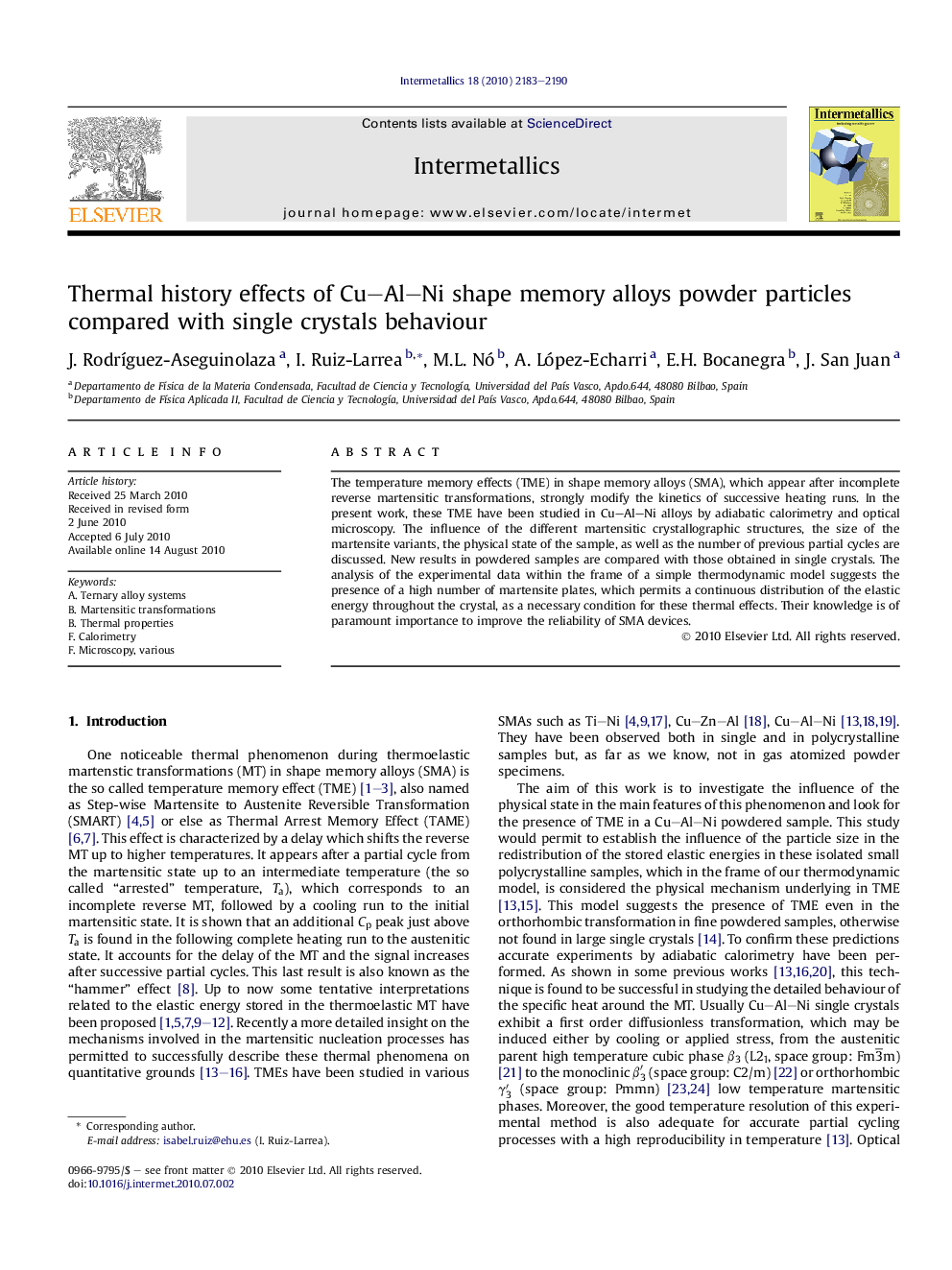| Article ID | Journal | Published Year | Pages | File Type |
|---|---|---|---|---|
| 10655610 | Intermetallics | 2010 | 8 Pages |
Abstract
The temperature memory effects (TME) in shape memory alloys (SMA), which appear after incomplete reverse martensitic transformations, strongly modify the kinetics of successive heating runs. In the present work, these TME have been studied in Cu-Al-Ni alloys by adiabatic calorimetry and optical microscopy. The influence of the different martensitic crystallographic structures, the size of the martensite variants, the physical state of the sample, as well as the number of previous partial cycles are discussed. New results in powdered samples are compared with those obtained in single crystals. The analysis of the experimental data within the frame of a simple thermodynamic model suggests the presence of a high number of martensite plates, which permits a continuous distribution of the elastic energy throughout the crystal, as a necessary condition for these thermal effects. Their knowledge is of paramount importance to improve the reliability of SMA devices.
Keywords
Related Topics
Physical Sciences and Engineering
Materials Science
Metals and Alloys
Authors
J. RodrÃguez-Aseguinolaza, I. Ruiz-Larrea, M.L. Nó, A. López-Echarri, E.H. Bocanegra, J. San Juan,
